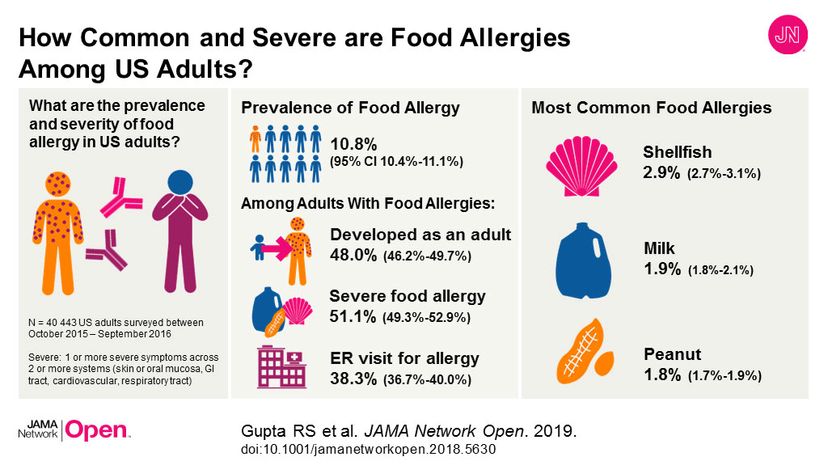
A lot of attention has been given to the increasing number of American kids with serious food allergies, now believed to be one in every 13 children (8 percent). School cafeterias have largely banned peanut butter — peanuts are one of the top triggers — and savvy parents know to quiz sleepover guests on allergies to other common foods like milk, eggs or wheat.
Childhood food allergies are a big deal, because a bad reaction could lead to anaphylactic shock, which if untreated by an epinephrine shot, could be fatal. But kids and their parents aren't the only ones who need to be educated about food allergies and how to respond to a severe allergic reaction. According to a new study, adults have it even worse.
Advertisement
More than 10 percent of American adults now have one or more food allergies, according to the largest in-depth survey of the prevalence of food allergies among adults. Of the 40,000 adults surveyed, 10.8 percent were determined to have a legitimate food allergy to things like shellfish, milk and peanuts (the top three allergies), severe enough to cause telltale symptoms of anaphylaxis like hives, swelling, throat tightening and trouble breathing. And nearly half of the allergies developed as adults.
"One in 10 adults with a food allergy is a lot of adults," says Dr. Ruchi Gupta, lead author of the study and director of the Science & Outcomes of Allergy & Asthma Research program at the Northwestern University Feinberg School of Medicine and the Ann & Robert H. Lurie Children's Hospital of Chicago. "This is a significant problem."
What worries Gupta, a pediatrician and researcher who previously focused on childhood food allergies, is not only the surprisingly high prevalence of food allergies among adults, but the fact that only half of the adult food allergies identified by the survey had been diagnosed by a doctor. Even more alarming, less than a quarter of adults with a bona fide food allergy carried an epinephrine pen, the only way to halt a deadly reaction.
Advertisement

